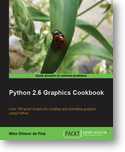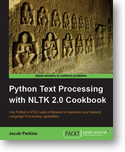The Brainy Learning Algorithms of Numenta
From the lead:
Jeff Hawkins has a track record at predicting the future. The founder of Palm and inventor of the PalmPilot, he spent the 1990s talking of a coming world in which we would all carry powerful computers in our pockets. “No one believed in it back then—people thought I was crazy,” he says. “Of course, I’m thrilled about how successful mobile computing is today.”
At his current firm, Numenta, Hawkins is working on another idea that seems to come out of left field: copying the workings of our own brains to build software that makes accurate snap decisions for today’s data-deluged businesses. He and his team have been working on their algorithms since 2005 and are finally preparing to release a version that is ready to be used in products. Numenta’s technology is aimed at a variety of applications, such as judging whether a credit card transaction is fraudulent, anticipating what a Web user will click next, or predicting the likelihood that a particular hospital patient will suffer a relapse.
In topic maps lingo, I would say the algorithms are developing parameters for subject recognition.
It would be interesting to see the development of parameters for subject recognition that could be sold or leased. As artifacts separate from software.
As far as I know, all searching software develops its own view from scratch, which seems pretty wasteful. Not to mention obtaining results of varying utility.
Questions:
- Are there any search engines or appliances that don’t start from scratch when indexing? (1-2 pages, citations)
- What issues do current search engines present to the addition of subject recognition rules, data or results (from other software)? (3-5 pages, citations)
- What would you add to current search engines? Rules, results from other engines? Why? (3-5 pages, citations)
 )
) 
